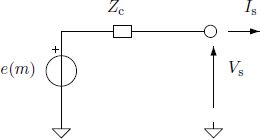1Fundamentals of Sensing and Signal Conditioning
1.1. Introduction
The first element in a classic electronic measuring system is the sensor. Its role is to translate the physical quantity to be measured (called measurand) in an electrical quantity of some kind. Clearly, the goal is to obtain knowledge about the physical quantity: this translation should be done in a well-known and reliable way. Sensors are based on a wide range of principles and (our point of view being from the electronics side) we follow the classification proposed in [ASC 03]. In other words, in this chapter we will categorize sensors depending on the electrical quantity at their output: voltage, current, charge, resistance and reactance. This categorization is not the only applicable one, but it allows us to treat signal conditioning at the same time as sensors.
1.2. Voltage generating sensors
1.2.1. General description
Several physical phenomena involve the presence of a voltage between two conductors in a specific piece of equipment. That voltage can be related to a particular physical variable. They can thus be exploited to build sensors that can be seen as voltage sources and whose voltage depends on the measurand m. Very often, the electrical representation of a sensor might be a Thévenin-type equivalent circuit including a series impedance, as shown in Figure 1.1.

Figure 1.1. Thévenin representation ...
Get Analog Electronics for Measuring Systems now with the O’Reilly learning platform.
O’Reilly members experience books, live events, courses curated by job role, and more from O’Reilly and nearly 200 top publishers.

